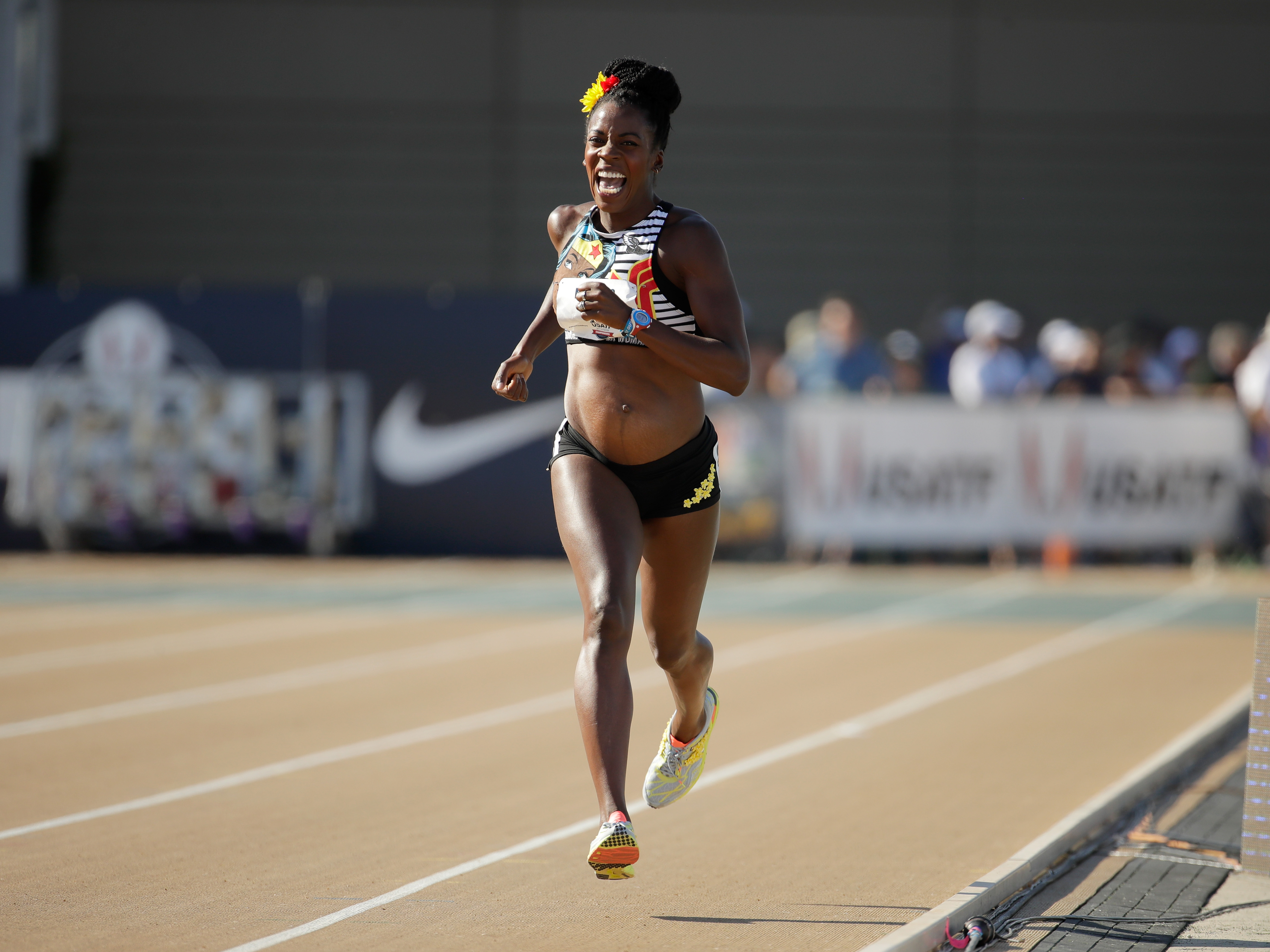- It’s healthy to work out while you’re pregnant, but figuring out what’s OK can be confusing.
- Experts recommend doing low-impact activities several times a week.
- Swimming, yoga, and light weight lifting are great options.
When you’re pregnant, you want to make the healthiest choices for your baby and yourself. For many, this means getting into some sort of exercise routine. According to the American Pregnancy Association, unless you have a high-risk pregnancy or your doctor says otherwise, working out when you’re expecting is not only healthy but recommended.
That said, figuring out what you should and shouldn’t be doing at the gym can be confusing and overwhelming. INSIDER spoke with fitness experts to find out what you need to know about working out while pregnant, so you can stay your healthiest during your nine-month journey.
Exercise is safe and can be healthy for your pregnancy
Noam Tamir, the founder of TS Fitness and a pre- and postnatal certified trainer, told INSIDER that while exercise is always a good idea, it’s especially important when you’re pregnant. He said, “It has shown to decrease the chances of pregnancy complications and decrease recovery time post-pregnancy.”
Nichole Tipps, a certified personal trainer at V Shred and a mother of three, told INSIDER, “Exercise has amazing benefits for pregnant women, and a safe routine can cut back on the aches and pains and improve circulation.”
Talk to your doctor first
Tipps said consulting with your doctor is the most important first step you can take. She said: "Your doctor will most likely want to clear you from any medical or obstetric risks. For example, your pregnancy could be more delicate than other women's, so the safest way to incorporate fitness might be going for afternoon walks with a friend or partner. There are also differences in the intensity at which you can work out depending on the trimester you're in."
If you're just starting out, keep things simple

If you didn't exercise a lot before you got pregnant but want to start now, that's OK, as long as you keep it simple - pregnancy isn't the time to try out tough new things or push your body to the limit. Tipps said that for beginners, "the simpler the better."
She suggested starting out with 20 minutes of low-impact activities, like swimming or yoga, three or four days a week and working your way up as your body adjusts. She added, "The key is to keep moving, keep the blood flowing, and work yourself into working out for the benefit it will have on your pregnancy."
Read more: 6 low-impact workouts that burn a ton of calories
Even if you exercised often before your pregnancy, you still need to be careful
"You have a little more capability when you have experience with exercise prior to pregnancy, but the same cautions still apply," Tipps said. She recommended avoiding high-risk activities and any kind of jolting, bouncing, or jerking movements. "Modify your routines to target balance, core strength, and range of motion," she said. "Just because you worked out before your pregnancy does not make it advisable to overheat or overwork your body."
Do what feels good
Pay attention to what your body is telling you - that's how you'll know if you're doing too much or too little. Katrina Scott, who is a co-founder of Tone It Up and who recently gave birth, told INSIDER, "Listen to your body and honor what you're feeling because each day is so different." She said, "In my first trimester, I focused on walking and doing the "pregnancy on demand" workouts in the Tone It Up app. In my second and third trimesters, lifting weights felt amazing. Fit in what you can, and be sure to rest when you need to."
Stay hydrated throughout
"Now more than ever, your body needs plenty of water and healthy nutrition to fuel you," Scott said. "Carry a water bottle and a healthy snack or two wherever your workout takes you."
Read more: 11 easy tricks for drinking more water
There are certain exercises you should avoid
Tipps recommended avoiding exercises that have a high risk of falling or that could harm your abdomen, like surfing and scuba diving.

Julie Tamir, a certified trainer and the founder of pregnancy fitness and wellness blog Mamala, gave a list of exercises pregnant people shouldn't do:
- Spinal flexion/extension (crunching movements, i.e. sit-ups or mountain climbers)
- Rotation with flexion/extension (i.e. bike crunches, Russian twists, yoga twists where hips and shoulders are disassociated, moving in the opposite direction)
- Downward-facing movements (i.e. planking, prolonged downward dog)
- Advanced supine exercises (i.e. tabletop, dead bugs, leg lifts) or any prolonged time lying on your back
- Very heavy lifting and high impact are also to be avoided, as well as breath holding (always breathe through the rep)
She said, "Many of these moves put excess pressure on your stomach muscles and can cause diastasis recti or pelvic floor dysfunction."
Scott also recommended avoiding exercises in supine positions, saying: "Once you reach the second trimester, it's best to avoid any moves that require you to lay flat on your back for extended periods of time. This can compress the vena cava, which can restrict circulation to you and your baby."
Focusing on strengthening your legs is a great way to work out while pregnant
Tipps suggested moves such as sumo squats and chair squats, which she said strengthen the core, glutes, and legs. "It also helps during delivery to have a sturdy pelvic floor and core," she said.
Swimming is a fun way to get your workout in
If using machines at the gym or doing an exercise video at home sounds boring, try something like swimming. Tipps said swimming is great for pregnant people because it uses your whole body and it's low-impact. She said it "helps improve circulation and blood flow, it is a staple for many people when it comes to cardiovascular workouts, and it helps tone the body and strengthen that core."
Prenatal yoga is also a wonderful option

Tipps recommended prenatal yoga and tai chi, both of which she said help you work on balance, muscle tone, and core strength. She said yoga and tai chi are "particularly relaxing as well, and studies have shown that both activities lower sleep disturbances, anxiety levels, and somatic symptoms."
Weight loss should not be your goal
"Pregnancy is not the time to work out for weight loss," Tipps said. "It is a time to stabilize the core and help the body cope with the aches and pains of having a baby inside your belly." She said pregnant people often have issues with "swelling, backache, lack of energy, poor circulation, and gestational diabetes." Exercise can help with all that.
Try to work out a few times a week
Julie Tamir said how much you work out depends on how much you were exercising before and the intensity of the workouts you're going to do. She recommended 30 minutes of moderate exercise a day, three to five days a week, and cited the American College of Obstetricians and Gynecologists, which says pregnant people should get at least 150 minutes of aerobic activity a week.
But remember, it's about how you feel. Scott said: "If you're feeling especially tired or just not yourself one day, that's OK. Listen to your body and jump back in the next day."
Don't be afraid of working up a sweat

Julie Tamir said that if you're already fit, on a scale of 1 to 10 with 10 being the hardest, you should be aiming for your workouts to be a 7 or 8. "In the first phase of training, the foundational phase, we recommend a level 6 or 7," she said. "In the strength phase, which is your most intense phase, 7.5 to 8.5, and then in stage three, a 7 or 8. The high end of the scale is for highly conditioned women."
Because you're training for labor - which she described as "a high-intensity interval class, times 100" - she said you should "end your pregnancy stronger than you started and slowly ramp up, and then slowly ramp down towards the due date, but still end stronger than you started."
Read more: Why Serena Williams decided to play the Australian Open right after finding out she was pregnant
Pay attention to your heart rate, but also to how you feel
Some pregnant people wonder if there's a specific heart rate they should stay below when working out. Noam Tamir said that it used to be 140 beats a minute but that it's been "replaced by how a woman feels." He said that the 140 BPM "didn't take into consideration a woman who frequently exercises" and that women who exercise regularly "have the ability to go higher in their heart rates."
He said that as long as you can talk and breathe comfortably, you're OK. And remember: "pregnant women have a slight increase in heart rate to begin with."
Building a strong foundation is important
Noam Tamir told INSIDER, "If I had to recommend a type of workout, it would be strength training." Pregnancy puts your body through a lot of stress, and increasing your strength helps you deal with that. "Having overall strength helps your body take on the trauma of childbirth," he said. "It also helps with the ability to bounce back from pregnancy."
You can do that by focusing on certain areas of your body. "Strengthening your booty, back, and arms will go such a long way during your pregnancy, delivery, and life as a mom," Scott said, adding that "functional moves like these will help build a strong foundation for all the changes happening in your body and prepare you for what's ahead." She said some of her favorite moves while she was pregnant were "squats, lunges, dumbbell rows, and shoulder presses."
Don't be afraid of weight lifting

Some pregnant people are hesitant about lifting weights because they don't want to get hurt, but Julie Tamir encourages it. She said research has shown that "prenatal workouts should be predominately strength training with key, performance-based fundamental exercises - squat, lunge, hinge, push, pull, rotate, carry."
Don't bounce around too much during cardio
But you shouldn't only be lifting weights: cardio is also an essential part of staying healthy. Tipps recommended opting for exercises that are low impact, have a low risk of falling, and can help stabilize and support your core. She said, "If you are trying out aerobics, make sure to keep it low impact, as it is best to avoid jumping and bouncing and movements that jerk you and your abdomen around."
Walking is better than nothing if you're exhausted
Take things as slow as you need to. Scott encourages even the most exhausted pregnant people to start small. "That can be calling up a girlfriend to go on a 10-minute walk outside," she said. "Chances are, those 10 minutes will turn into 20 and will leave you feeling so much stronger than you gave yourself credit for." She said walking is a great way to get some movement into your day, adding, "If you're on a treadmill, walking on an incline is such an amazing way to get your heart rate up and keep your lower body toned."
- Read more:
- 21 answers to the most uncomfortable pregnancy questions you were too embarrassed to ask
- 11 benefits of strength training for your body and brain
- 37-year-old Meghan Markle's pregnancy is considered 'geriatric' - here's what that means
- 9 ways to survive your summer pregnancy
- 13 things you shouldn't do when you're pregnant, according to two doctors

